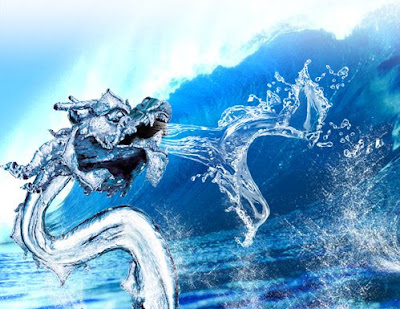It's time to paint the town purple again! It's Bohol's 12th annual UbiFest on Wednesday and it's gonna be bloody awesome--purply bloody, that is.
Enjoy reading!
______________________________
It’s a formidable task for a Bol-anon writer to figure out where to begin writing about ubi. It has always been part of my life and upbringing and I feel like there’s so much to talk about.
As far as I could remember, kinampay has always been a word regularly used by everyone around me. It was 17 years ago, as a kindergartener, that I was taught, word-for-word, how to sing the Bohol Hymn. The nuns at my preschool explained, by way of showing us a piece of ubi, that the word Kinampay from “lungsod sa bungtod nga matunhay ug matam-is nga kinampay,” which we sang every Monday before the beginning of class, represents a big root that revealed a silky and sticky purple flesh when cracked open, and of the fact that it makes a favorite Bol-anon holiday delicacy when mashed and folded in with other tasty ingredients.
Of course, since this is Ludwig writing, I’m not going to leave you without dishing out a couple of facts. This article will not dwell merely on my personal encounters with ubi, but on its relationship with our province and people as a whole. This’ll be another history lesson and you better pay attention because this is important stuff. This is about our beloved province. People shouldn’t proudly call themselves Bol-anons and take the subject of ubi lightly. Bail yourselves out of living as ignoramuses to your own culture and read on.
In the olden days—as in way, way back before the Spanish decided to colonize Bohol and proselytize everyone into adopting their belief system—ubi, particularly Kinampay, was regarded as the island’s most sacred crop. It was treated with more care than gold and precious stones. The method of sowing was ceremonious and intricate. It was a source of pride for those who participated in it. With the full moon soaring in the night sky, a line of non-menstruating virgins would march naked in ploughed land and plant ubi while uttering blessings and seeking the aid of Ay Sono, the Anito of the Island. Surely enough, with proper care, the crops would grow and flourish as vines with leaves the shape of a heart.
Such a pagan tradition has been carried into Christianity particularly in the areas of the province where agriculture remains as the primary source of income for the people. Bohol’s women are resilient, no doubt. Traditions have lived through their persistence in preserving Bol-anon culture and that’s what puts a smile of awe on my face. Although the original method of carrying out the planting may have been tweaked a little, to this day, there are those who—despite their Catholic beliefs—remain faithful to the way things were done before.
In the year 2000, having noticed the significance of ubi to Bohol, then Governor Rene L. Relampagos and Vice-governor Edgardo M. Chatto took a leap forward and launched the first Ubifest with the help of Mr. Lutgardo Labad. The festival prototype was made open to all farmers, scientists, researchers, stakeholders, and businessmen from all organizations and universities all over the country. As expected, it turned out to be an enormous success and has since then been held every year as an avenue for the promotion of ubi.
It has been nearly twelve years since the tradition of holding the Ubifest was started and I must say it has only gotten better.
This Wednesday, January 18th, the color purple will rule the island again. The year 2012 marks the 12th Ubifest which will be opened at the Acacia Garden of the Bohol Provincial Capitol. And as a tri-annual tradition, another Miss Ubifest will be crowned on January 19th, at Island City Mall.
Plenty of you may wonder what the essence of the Miss Ubifest pageant is. Well, my answer has already been given. Remember the women—the women of ubi! She may not necessarily prace nude and barefoot under the full moon while planting ubi, but she represents the great part of history that women have played.
And how significant is all this to Bohol? Observe the way the root looks on the outside. Doesn’t it remind you of the shape of the land that grows it? Moreover, it has been scientifically proven that ubi kinampay planted outside Bohol doesn’t grow the same way no matter how fertile the soil is. It represents the inimitability of a Bol-anon.







